#helicoplacus
Text



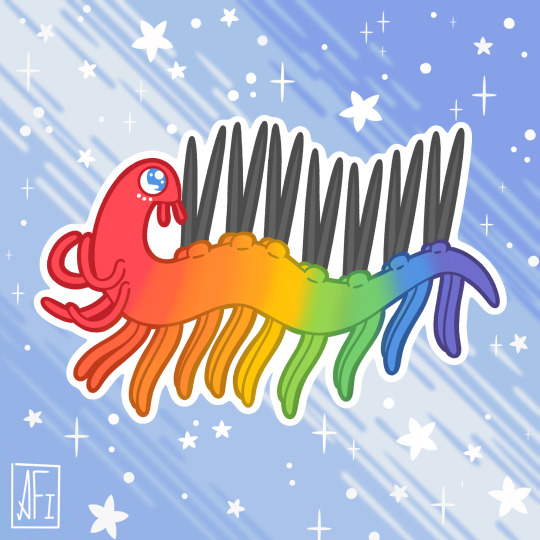


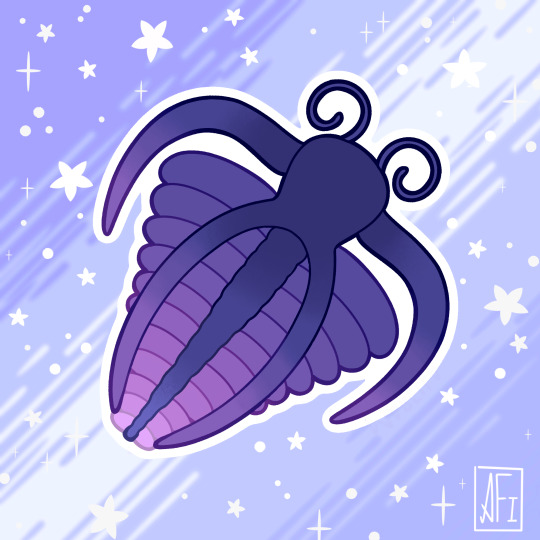
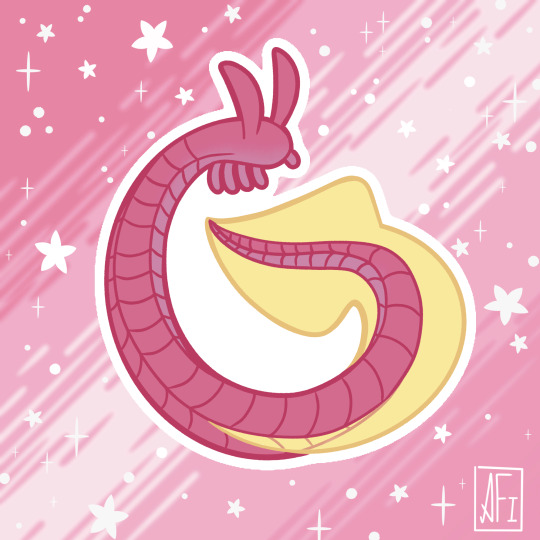
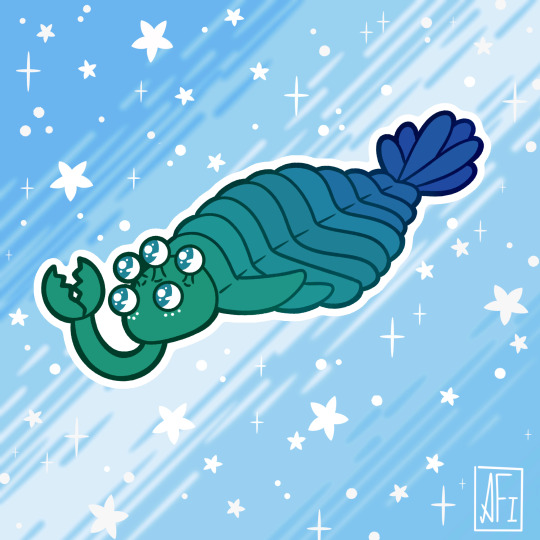






My entire Cambrian Catalogue!
Anomalocaris - Canadaspis - Eldonia
Hallucigenia - Helicoplacus - Hurdia
Marella - Pikaia - Opabinia
Haikoucaris - Wiwaxia - Paradoxides
Pomatrum - Rugose Coral - Vetuicola
Are there any missing here that you'd like to see?
#my art#paleontology#paleoart#science#cambrian#anomalocaris#canadaspis#eldonia#hallucigenia#helicoplacus#hurdia#marella#pikaia#opabinia#haikoucaris#wiwaxia#paradoxides#pomatrum#rugose coral#vetuicola
186 notes
·
View notes
Photo
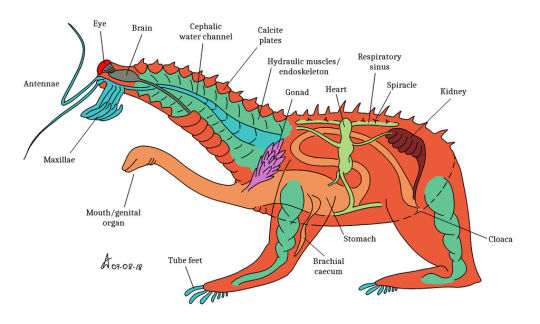
Hypothetical land animal descended from a starfish.
Original page on my DeviantArt here (drawn in 2018, when I should have been working on my master thesis instead)
It's well known that echinoderms descend from bilateral ancestors [i.e. with a left/right symmetry, like vertebrates], such as the Cambrian Ctenoimbricata, and that they adopted a secondary radial symmetry as an adaptation to an increasingly sessile, filter-feeding lifestyle like that we see in sea lilies today. In fact, later Paleozoic echinoderms seem to run the gamut from fully asymmetric (Cothurnocystis) to three-sided (Helicoplacus) to five-sided (Gogia), The reduction of musculature in favor of connective- and vascular system-based movement might have the same origin. (On this argument, see Zamora et al., 2012 and Zamora & Rahman, 2015.)
Interestingly, some modern echinoderms seem to be going the opposite way. Some sea cucumbers have retaken an active, and even pelagic, lifestyle, and their bodyplan is taking a more bilateral shape. Brittle stars, which are surprisingly active animals, have redeveloped their musculature and greatly reduced the vascular tube feet.
So. What if an echinoderm, say a common starfish, were to evolve into a motile, bilateral, maybe even land-based animal?
Now, as great as echinoderms are, they do have significant handicaps in this sense. Their vascular system, from which they depend for movement, respiration, and metabolite distribution, is open to the outside (seawater is filtered through a porous plaque called madreporite). They have no reliable system of osmoregulation, which means they can't survive without salt water. Let's be realistic, if in half a billion year echinoderms have never produced (as far as we know) so much as a freshwate species, let alone a terrestrial one, I don't think there's much hope of it happening in the future.
But, just for the fun of it, let's imagine it happens anyway. A starfish somehow manages to close off its water vascular system (which is, after all, a compartment of the coelom), keeping it around only for mechanical purposes. Respiration is transferred to the body wall, which develops many small respiratory sacs; and circulation is full entrusted to the haemal system, a net of channels separate from the coelom.
(In the case you need it, this is a pretty good diagram of starfish anatomy.)
The hemal system develops a proper heart (rudiments of which already exist in starfish) and a kidney-like organ(s) to regulate the salinity of blood and the vascular fluid. Now our creature can live in fresh water. The water vascular system fills the larger coelom compartment and forms hydraulic muscles - connected sacs (each of which can be sealed off with a sphincter if it loses pressure) that can contract or relax thanks to walls of proper muscle. Once the body wall is flexible enough, this allows both and efficient control of movement, and mechanical support even out of the water!
The creature adopts a very active lifestyle, which naturally favours a bilateral symmetry, because when you move in a consistent direction it's more efficient to place your sense organs, weapons, and mouth there (basically making a head), and not put them behind. There's no meaningful difference between left and right sides, though.
Each arm of a starfish contains a nerve that runs along the ventral surface (better to pull that inside!) and ends in an "optic cushion", basically an eye. The distal tube feet allow to crudely manipulate objects. That's a good start for a head. A single eye can't see depth, but you can just do what birds (which can't look at an object with both eyes) do, and bob your head to infer distances from parallax. Of course the nerve cord will concentrate its neurons at the end, and form a crude brain.
A problem: you can't put the mouth there, because the mouth of a starfish is at the center: it's the opening of the big central stomach that can be everted to swallow preys. Problem solved: pull a Snaiad and extend the stomach forward, basically as a muscular second head that exists only to feed.
No, not only. Starfish have huge gonads that open between the arms to spray eggs and sperm into the water and hope for the best. Out of water, that's not an option. So let's say the gonads reorient their openings into the stomach. Now the feeding head is also a genital organ, and the land-starfish can impregnate each other with a kiss. (The female will probably just vomit the fertilized eggs, maybe in a convenient pond for a frog-style larval stage.)
For respiration, say that the little cavities between the dorsal plates become hundreds of tiny lungs, each opening into a spiracle, that deliver oxygen to the haemal system. More specifically, soaking in the blood of a special haemal compartment (a "respiratory sinus").
The anterior tube feet, which will always be the first bodypart to contact something, have developed a hard cuticle that divides them in discrete segments, turning into two pairs of antennae and four of maxillae (insect-stile jaws, useful to fend off enemies and chew up food for the gastro-genital head). Similarly, independent tube feet have survived at the tip of the other four arms - which have not gained much complexity, beyond the new hydraulic musculature. In other species they may take the form of sharp claws or nimble fingers.
And there you have it. A starfish from our seas turned into a barely recognizable ursine beast by a number of suspiciously convenient adaptations - not to mention a distinct lack of terrestrial competition and a generous reprieve from planetary sterilization courtesy of the Sun. An implant on a mostly empty alien planet, perhaps? Or simply evolution taking a radically different road somewhen around the Ordovician Extinction, maybe in a world in which this "vertebrate" thing didn't really work?
Chissà.
@danbensen >_>
88 notes
·
View notes
Photo
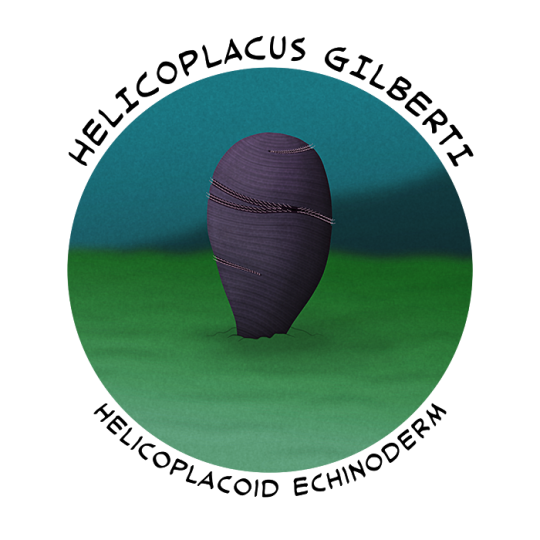

Cambrian Explosion Month #12: Phylum Echinodermata – Radial Revolution
While many of the earliest echinoderms had bizarre asymmetrical forms, at some point members of their lineage adopted radial symmetry instead – a development that would eventually lead to the familiar five-way symmetry of most modern species.
And they may have transitioned to that via three-way symmetry.
Helicoplacus gilberti is known from California, USA, and dates to around 525 million years ago. About 7cm tall (2.75"), it had what appears to be three feeding grooves on a body twisted around into a spiralling cigar shape, and it would have lived standing upright with its base buried into soft muddy sediment or microbial mats.
As one of the oldest definite echinoderms in the fossil record, for a long time it was thought to be an extremely "primitive" basal form possibly ancestral to all other groups in the phylum. Its confusing anatomy didn't help, with debates over the location of its mouth and whether its twisting body was really triradially symmetric or not, but more recent studies have suggested it was actually much closer related to modern echinoderms than to the weird asymmetrical ones.
The discovery of a closely related species named Helicocystis shows a potential transitional form between helicoplacoids and pentaradial echinoderms – a spiral Helicoplacus-like body, but with five feeding grooves, and a small attachment stalk at its base that resembles those of early five-rayed groups like eocrinoids.
This would also mean that all the early echinoderm lineages diverged from their common ancestors even more rapidly than previously thought, developing body plans ranging from bilateral to asymmetric to pentaradial within just a few million years in the early Cambrian.
———
Eocrinoids were some of the first pentaradial echinoderms to have both attachment stalks and erect feeding appendages, and were the ancestral members of a group called the blastozoans, but it's not clear if they were actually ancestors or close relatives of modern crinoids. Traditionally crinoids are thought to have evolved from blastozoans, but other studies suggest their similarities might be convergent and crinoids could instead be descended from another group called edrioasteroids.
Guizhoueocrinus yui was an early eocrinoid with a vase-shaped body and a thick stem. Known from southwest China, about 516-513 million years ago, its five arms split into pairs of spirally coiled appendages near their bases, giving it a total of ten.
It grew to around 6cm tall (2.4"), and spent its life filter-feeding while attached to hard surfaces on the sea floor, such as the shells of brachiopods, trilobites, and hyoliths – possibly while some owners of the shells were still alive, and sometimes with multiple individuals found on the same shell.
Another potential link between Helicoplacus and early pentaradial echinoderms also comes from Guizhoueocrinus, with evidence of a "crypto-helical" spiral arrangement of its skeletal plates.
The eocrinoids were the most diverse and successful echinoderms during the Cambrian, and went on to survive until the late Silurian, while other blastozoans descended from them lasted up until the end-Permian mass extinction 250 million years ago. (…Unless crinoids are blastozoans, in which case some descendants of eocrinoids are still alive today.)
———
Nix Illustration | Tumblr | Pillowfort | Twitter | Patreon
#science illustration#paleontology#paleoart#palaeoblr#cambrian explosion 2021#echinoderm#helicoplacus#guizhoueocrinus#gogiida#eocrinoidea#blastozoa#ambulacraria#deuterostome#bilateria#eumetazoa#animalia#art
86 notes
·
View notes
Text





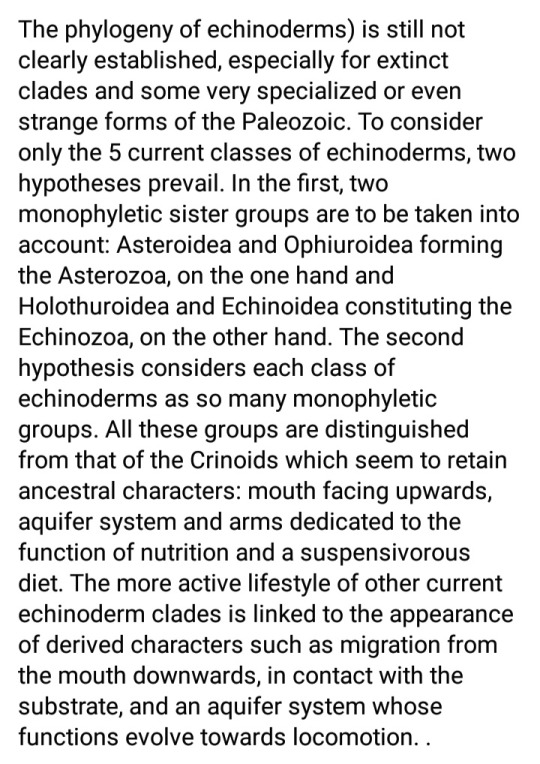

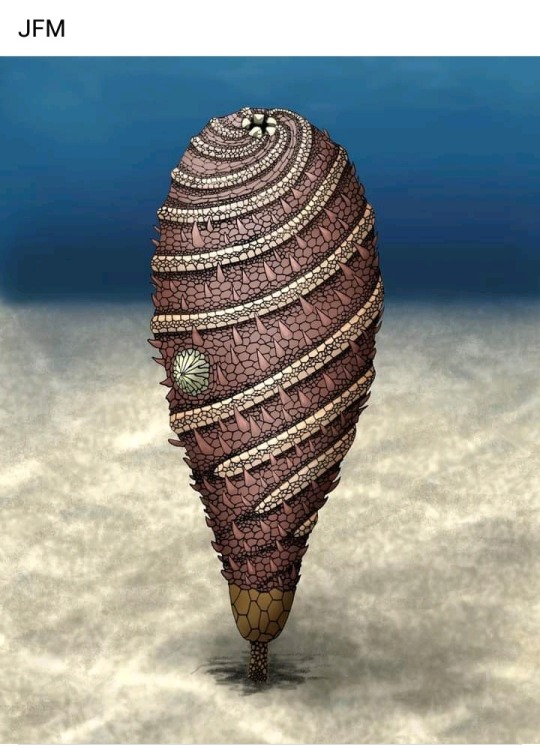
1st Echinoderms, Helicoplacus "spiral plate"
#marinebiology#echinoderms#cambrian echinoderms#the first echinoderms#scientific ecology#helicoplacoidea#spiral plate
3 notes
·
View notes
Text
@aphid-kirby:
AAAA I LOVE THIS YES YES!!!!! Well they kind of have skin, just layers that store the denticules (their endoskeleton) and it has been extremely modified throughout the Echinoderm lineage a lot! Specially in extinct ones (there’s an echinoderm that probably stretched in and out like a heart! (Helicoplacus) Anyways yeah everything is possible, a lot of sea cucumbers reduced their endoskeleton to basically nothing which allows them to liquify at will by changing the density of denticules in a particular area!
Also yes! Wiwaxia is placed with other Molluscs due to their mouth pieces, which resemble a Radula (the tongue thingy snails have) !
Also the hands could be literally anything specialized, sea pigs specialized 4 of their triviumal (dorsal) tube feet into antennae!!! And they are extremely sensitive chemoreceptors that can smell rotting algae from very far away, so echinoderm can reach any kind of sensitivity as needed
This is the most I’ve understood about Echinoderm skin situation ever THANK you so much. Every month or so I was like. “?. Sea urchin... have skin? Google?” and not understanding completely because while I possess enthusiasm I am not that smart or good at google UNFORTUNATELY... I just try my best
I was surprised about Wiwaxia being a Mollusk because upon digging up my Baby’s First Paleontology Book I guess they didn’t know that yet when it was written! It was written in 2004, it’s bound to be veeery outdated now, it’s more of a comfort/cool pictures book for me now... That book listed it under Polychaeta, not that I would have known what that was the last time I looked at that book’s entry on Wiwaxia lol. It’s so exciting how we keep Learning about animals aaa...
I still don’t know for sure what I’m assuming the limbs are derived from. I think the very first time I was poking at them the whole limb was a tube arm but I’m not sure anymore. But it’s good to get confirmation that echinoderms can get really wild. Like I knew vaguely in theory but I never. Thought about them so much they’re cool!
#ive never paid much attention to echinoderms until this BASTARD showed up and i had to Know...#well. spyke isnt the one that made me care about what these fucks were it's Murasaki but hes not a bastard#replies#on a fresh post...#aphid kirby
4 notes
·
View notes
Photo
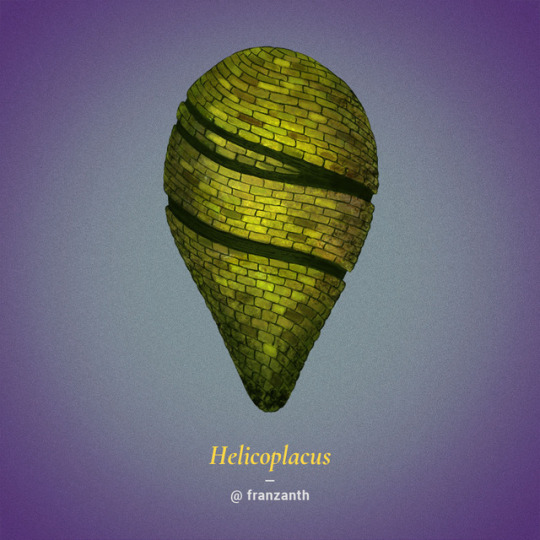
Though sea stars and sea urchins are mostly known for their star or flower-like shapes, their earliest relatives like Helicoplacus had spiral body pattern instead. They lived half-buried under the slimy seafloor during a time when most animals couldn't move much.
—
Tumblr is now blocked here so I won’t post often. Follow me elsewhere:
Facebook · Instagram · Twitter · Ko-fi · Patreon · Shop
—
Edit: I’m sorry.

263 notes
·
View notes
Text
Os Echinodermata (do grego echinos, espinho + derma, pele + ata, caracterizado por), também denominados equinodermos, equinodermes ou equinodermas, são animaisdeuterostômios exclusivamente marinhos e bentônicos. Tais seres são representantes do filo Echinodermata. São animais de vida livre, exceto por alguns crinóides que vivem fixos a um substrato rochoso (sésseis) e de simetria radial que também apresentam sua exceção, os comatulídeos, que se locomovem utilizando os braços. Este filo surgiu no período Cambriano recente e contém cerca de 7.000 espécies viventes e 13.000 extintas.
EquinodermesOcorrência: Cambriano - Recente
"Echinidea" do livro, de Ernst Haeckel, Kunstformen der Natur de 1899.Classificação científicaDomínio:Eukaryota
Reino:Animalia
Subreino:Eumetazoa
(sem classif.)Bilateria
Superfilo:Deuterostomia
Filo:Echinodermata
Klein, 1734ClassesSubfilo Eleutherozoa
Echinoidea
Holothuroidea
Ophiocistioidea†
Asteroidea
Ophiuroidea
Somasteroidea
Subfilo Pelmatozoa
Crinoidea
Estes animais se aproximam muito dos cordados por possuírem celoma verdadeiro (de origem enterocélica) e por serem deuterostômios, ou seja, o orifício embrionário conhecido como blastóporoorigina o ânus dos indivíduos. Os sexos normalmente são separados. A reprodução sexual tipicamente consiste de liberação de ovos e espermas na água, com a fecundação acontecendo externamente.
Na fase larval os equinodermos possuem simetria bilateral, vindo desenvolver a simetria radial somente no adulto. As larvas são livres natantes e semelhantes a embriões de cordados. Depois, o lado esquerdo do corpo se desenvolve mais que o direito, que é absorvido, e organiza-se numa simetria radial, em que o corpo é arranjado em partes em volta de um eixo central. Esta é basicamente pentâmera, ou seja, os elementos geralmente se dispõem em 5 ou múltiplos de 5. Possuem esqueleto formado por placas calcárias, coberto por fina camada epidérmica. O endoesqueleto mesodérmico é formado de pequenas placas de calcário e espinhos, que formam um rígido suporte que contem em si os tecidos do organismo; alguns grupos têm espinhos modificados chamados pedicelários que possibilitam a vida livre.
Os equinodermos tipicamente possuem um sistema hidrovascular ou sistema aquífero (também denominado sistema ambulacral), que funciona na locomoção destes animais. O sistema hidrovascular funciona através de um sistema de canais hidráulicos, nos quais a diferença de pressão produz movimentos físicos. Também existem ventosas nas extremidades dos canais que permitem ao animal fixar-se ao substrato, exceto os representantes da classe Ophiuroidea.
Eles têm um sistema nervoso radial simples que consistem em uma rede nervosa modificada (neurônios interconectados sem nenhum órgão central) e composto por anéis nervosos nervos radiais em volta da boca se estendendo por cada braço. Os ramos desses nervos coordenam o movimento do animal. Os equinodermos não têm cérebro, embora alguns possam ter gânglios.
Os espinhos estão presentes em diversos formatos nos grupos de equinodermos, e atuam com a função de proteger o animal e para a locomoção. Podem ser recobertos por substâncias de caráter tóxico.
Muitos equinodermos têm notável poder de regeneração: uma estrela-do-mar cortada radialmente em várias partes vai, depois de alguns meses, regenerar em tantas estrelas viáveis quantas foram as partes separadas. O corte de um braço (com uma parte proporcional de massa da parte central e de tecido nervoso) vai, em circunstâncias ideais, regenerar do mesmo modo.
Formas fósseis incluem os blastóides, edrioasteróides, e vários outros animais do Cambriano conhecidos como Helicoplacus, carpóides, Homalozoa, e eocrinóides como a Gogia.
Os Echinodermata são invertebrados exclusivamente marinhos, não possuindo representantes que habitem o meio terrestre ou dulcícola.
Os equinodermos apresentam um conjunto de características únicas ausentes nos outros filos, dentre as quais destaca-se a simetria radial pentameral, ou seja, o corpo geralmente é dividido em cinco partes dispostas ao redor do eixo central.
0 notes
Text
Paleo party time! This guest is Helicoplacus and evolution said to scrap their project lol
Looking at the sticker shot at the end, I used to make all my stickers so small lmao, they're a bit bigger now
14 notes
·
View notes
Text
Not saying I agree, but the world has strong opinions on what does or doesn't work
#my art#paleontology#paleoart#paleozoic#sharks#dunkleosteus#arthropleura#helicoplacus#horseshoe crab#paleo party
16 notes
·
View notes